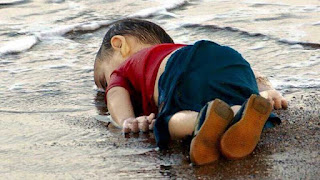Worldwide, the wedding industry is estimated to be worth $ 300 billion a year. USA’s share is some $73 billion.
The USA wedding numbers are now out. 2.13 million
(2018), 2.13 million (2019), 1.11 million (2020). The wedding ceremonies that
took place were sharply shrunk, budgets lowered, guest lists curtailed. The
micro-weddings were followed by mini-moons instead of honeymoons. Instead of
travelling abroad, couples settled for moving domestically, sometimes to a
resort only a few miles away.
In 2019, the average wedding in the USA cost $25000+,
most of it going to the reception ceremony. In the pandemic, nuptials took
place in the family house backyard or online. The expense came down
substantially, and wedding industry vendors had to adapt. Hotels are offering elopement packages, bridal
gown designers are creating shorter dresses and bakers are baking miniature
cakes to be individually served.
Though there were fewer marriages, reportedly there
were more than usual engagements. Couples found themselves locked in the house,
or isolated away from one another; both were susceptible to realize love and
get engaged. Pre-pandemic engagement rings had 1 carat stones. Now a standard engagement
ring comes with a 2.5 carat diamond ($6000-$9000). Larger and more novel cuts
of diamonds, including pear and heart shaped stones, are in heavy demand.
Some redirect the saved money on flowers. Instead of
200 guests, they are allowed 20. They are spending on expensive flowers, specialty
arrangements and hanging installations.
*****
Newspapers had published scary stories of traditional
weddings held courageously. In August 2020, a 55-person wedding in rural Maine spread
infections across more than 200 miles, landing seven in hospital and killing
seven in total. A 300-person wedding in Washington resulted in 61 cases, and 15
deaths.
When traditional wedding bookings dried up, Caroline
Creidenberg began offering planned Zoom weddings. She bought a few dozen
tripods, microphones and lights. There are virtual group dances, toasts and
breakout rooms separated by virtual tables. The package costs $1200 excluding
photo guest book ($100) and slide shows ($200).
*****
The Association of British Wedding Businesses reports
that 36% weddings were cancelled or postponed. The £10 billion industry
suffered a loss of £5.6 billion.
Nearly 80% of the world’s wedding gowns are stitched
in China. Those made outside China also rely on Chinese fabrics and materials.
Last year, when China closed its factories to curb the coronavirus outbreaks,
brides in America and Europe were suddenly dress-less.
Next week, on 20 May, China celebrates its own Valentine’s
Day. This year, more than 200,000 Chinese couples have registered for marriage licenses
on that day.
*****
India holds 12 million weddings every year. Some
couples don’t want to postpone because the auspicious date set by the family
astrologer may not return in future. In Gujarat, reportedly 30,000 wedding
ceremonies were cancelled. Those determined to abide by the date either married
in a private ceremony or online. Shaadi.com is a popular matchmaking site. It
now offers a “weddings from home” (its own form of WFH) service that provides a
qualified pundit (Hindu priest), and tutorials for bridal make-up. Some Indian
weddings have had hundreds of attendees online, and a live stream for thousands
more.
*****
New York’s Governor Andrew Cuomo went one step ahead
in the online wedding business, and issued an executive order named “project
cupid”. This for the first time allowed couples to apply for marriage licenses
online, and not turn up in person as required by law.
In parts of Asia and Africa, weddings are ruinously
expensive. Some shrewd young men and women are hurrying up to marry to save on
expense. They can avoid falling in debt over their weddings.
It is an excellent thought to arrange a wedding
cheaply, in the backyard or online with only the immediate families present.
Postpone the reception ceremony to a few years down the line. That way, money
wasted in marriages that don’t last long can be saved. Wise couples would do
well to follow this wedding-reception distancing practice even after the
pandemic is over.
Ravi









